|
Landreth soaked up the local culture in the seventies while playing with Clifton Chenier, the renowned zydeco king. Throughout this early period he was actively perfecting his playing style, one that was also coerced along by a devout interest in the method of Chet Atkins. His high regard for the music of contemporaries such as Scotty Moore, Eric Clapton and Jimi Hendrix was matched with an inexhaustible desire to further his slide playing technique into unchartered territory. All of these attributes would later give way to the signature playing style of Sonny Landreth.
Guitarists throughout the world are awestruck when viewing the chordal and picking dexterity that transpires on either side of the glass. The slide, which is on his pinky finger, glides above the fretboard and along the strings; simultaneously, the other four fingers fret chords and notes to the left of it. And while the five fingers on the right hand pick, pluck and tap away, he concurrently utilizes a unique muting technique with his palms and his fingers. Both thumbs are utilized to the max throughout all of this. People who watch Landreth’s technique notice something new and extraordinary every time they’re in his presence.
Both South of I-10 and Levee Town, released in 1995 and 2000 respectively, contain some of the most incredible slide guitar work ever recorded. These Landreth albums are drenched in delta blues and zydeco flavors, a backdrop to a sound that’s both genuine and traditional. While inclusions such as “Love And Glory,” “Levee Town” and “Congo Square” (covered by names as diverse as John Mayall, Tom Principato, Kenny Neal and the Neville Brothers) went on to garner songwriter recognition, his adeptness for traditional blues ambiance is blatant on tracks like “Broken Hearted Road” and “Great Gulf Wind.”
Nevertheless, the rollicking instrumental, “Native Stepson,” has become an anthem for fans everywhere – the exclaimer of his existence to the unaware, as well. Instantly seizing the ears of music enthusiasts everywhere, the song heralded far and wide the talent of this burgeoning slide guitarist from Louisiana. Recorded live at the Grant Street Dancehall in Lafayette back in 2004, Grant Street is an amazing display of Landreth in a live setting where he creates an exhilarating atmosphere. An electrifying “Native Stepson” opens the set.
Looking outside his slide prowess – an act that’s sometimes hard to do – the fact shouldn’t be overlooked that he’s a great guitarist when playing conventionally, a fine vocalist and an accomplished composer and lyricist. Citing him as one of the most underrated musicians on the planet, as well as one of the most advanced, Eric Clapton chose Landreth to open his Crossroads festival in Chicago back in the summer of 2007. As anyone associated with Clapton, this incident assisted greatly in furthering Landreth’s notoriety. Finally, he has elevated to a level in which he’s able to call past and present idols his peers – some of which appear on his 2008 collaborative effort.
Sonny Landreth gets by with a little help from friends Eric Clapton, Mark Knopfler, Eric Johnson, Robben Ford, Vince Gill and more on From the Reach. It’s an amazing collaboration of sorts. Although Landreth composed the entire album, each song was written specifically for its special guest musician. The endeavor was such a success that one might think the guests wrote the songs instead of Sonny, primarily because the styles are so akin to their own.
It just goes to show the degree of admiration and respect he has for each friend and acquaintance on the album. One can easily sense elements of camaraderie and reverence radiate from the performances, along with an air of aptness – not in a competitive sense, but in a sanguine optimism in knowing that they’re among peers of distinction. It’s obvious that the music being made was exciting to even them. Clapton excels in his two efforts, as does Knopfler in the album’s opener, and those examples just scrape the surface. Importantly enough, Landreth shines throughout. Playing alongside him seems to have compelled each guest to stand out alongside Landreth – but then again, that’s what brilliant performers aspire to. The brilliance of performance is augmented when people of such caliber do it together, making the music all the more enjoyable to listen to.
We recently sat down with Sonny Landreth to talk about left and right hand playing techniques, the making of From the Reach and much more.
Sonny, a lot has been going on lately.
Well, it has.
From The Reach is a great album, by the way.
I appreciate it, man. I’m really happy with it.
Bassist Dave Ranson has said that your slide playing has a tendency to scare other slide players. How does that make you feel?
[Laughs] I don’t know about that, man. I just keep my head down and try to play in tune and in time. We’ve done a lot of shows with a lot of great musicians which is always inspirational. Every time I hear these other players, I go, “Oh, man.” It’s about getting fired up, in terms of the creative side of it.
Who were your influences growing up? Who helped in coercing you to develop such a great style?
I had a ton of heroes and I always loved music. My older brother was always bringing music into the house, ever since I was a little kid. We were living in Mississippi; we moved to Louisiana when I was seven years old – I thanked my dad for years about making that move. [laughs] It’s such a great culture here.
The Cajun and zydeco influence started here in Dixieland, New Orleans and New Orleans jazz. I played trumpet in school, so I had classical and jazz influences with rock n’ roll. Early on it was Scotty Moore with Elvis, the Ventures and then an older kid in a music store turned me on to Chet Atkins. That’s how I learned the right hand fingerstyle approach – from Chet Atkins. Some years later, when I was getting into delta blues and discovering slide, I was using the slide with that same approach on the right hand. It set me on my path. I heard B. B. King when I was 16, and at a funky little club in Louisiana I heard Clifton Chenier for the first time – the Zydeco King. He invited me inside and my world changed that night. I saw, heard and met Jimi Hendrix in the late sixties when he played in Baton Rouge. There are a lot of influences.
Talk about playing behind the slide with the left hand.
What I learned from the delta players was to tune the guitar to a certain key. For example, if the song is in E, there are two basic tunings. I would use those and then start experimenting with tunings of my own. I was playing a blues thing and I was frustrated about playing in a minor key while tuned to a major key. Long story short, I could see the notes behind the glass and had the inspiration to fret that note behind the glass. When using a slide, the strings float over the neck – you don’t use the frets. You don’t press against the fretboard like you do when playing regular guitar. The slide makes the tones on the strings as they float above the fretboard, so behind that there’s just enough room on the hand. I have the slide on my little finger, leaving the other three fingers to chord or use for fretting positions behind and under the glass. It’s the combination of the fretted notes and the slide notes that are floating that creates the mojo.
When I discovered that, it opened the window. I sensed the potential for the creativity of slide guitar way more than I had even anticipated. I just became more adventurous and started trying things, and I started coming up with all these different techniques. But what it really comes back to is my role models; these delta players were the package in one deal – the singer, songwriter in most cases and guitar player. So they were supporting the lyric in the song, and in the case of using the slide, they could create different sounds. So that’s what it’s about for me. It’s about the song and using these techniques for the sake of the lyric more than anything.
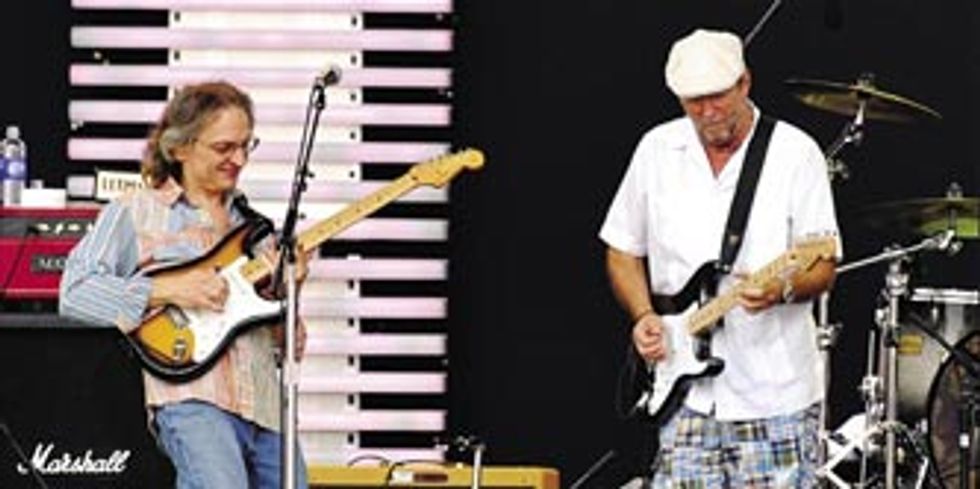 | |
|
As I had said, I learned the Chet Atkins fingerstyle approach. Looking back on it, that’s when I started realizing the guitar as a solo instrument. That was the gift I got from Chet Atkins. I love those albums where it’s just his guitar – the electric guitar. But it’s somewhat of a classical approach as a solo instrument, like a piano. He would have a bass line and a fingerpicking pattern, with rhythm, chords and a melody all going around at the same time. That left an impression on me, and I think that once I got into using a slide on the left hand, which I got from the delta bluesmen, it really set me on my own path.
Now, to get a little more technical, one thing that’s important to discuss is the muting technique, whereby you assign a finger per string. From high to low, the high string would be the third finger on the right hand, the second string would be the second finger and the third string would be the first – or index finger. The thumb controls the bottom three. What happens is, whatever note I’m playing on whichever string – with the slide, for example – if it’s a single note then all the other strings are muted by allowing the fingers to drape or cover those strings. Obviously, I don’t do that all the time because a lot of times you want all that to open up and ring. But that’s how you learn to control what’s happening on one side of the slide when the notes are ringing and to use your palm to extract tones and overtones on notes on the other side of the glass.
There’s another technique that uses the palm of your right hand. You have some distance between the very bottom of the string and the fretboard with slide, so when I’m sliding those strings officially aren’t touching the frets and are not touching the fretboard. I’ll probably contradict myself later, because there’s always a weird reverse technique that pulls out a different sound when doing the exact opposite. [laughs] But basically, that allows you to press down all six strings or any combination with the palm. As you press down, the slide goes with you. That allows you to excite the strings and bend the notes behind the slide – the ghost notes I call them.
What you can do is emulate vibrato, tremolo, chorus and echo. Also, when you fret certain notes on the neck, let’s say two strings in harmony and the other four strings are floating with the slide, the clash of the two creates the potential for oscillations, which can also be controlled with the right hand. You can control the speed of them – they can really ring on and be very strange at the same time. It adds a lot of character to the overall sound which becomes more complex. You’re not just getting individual notes, but you’re getting a combination of notes and overtones plus the effect of these oscillations.
As you had said, you began on the trumpet. Did that influence your guitar playing style?
Oh yeah, and I was talking to Robben Ford about this – he started out playing saxophone. You approach the guitar with a completely different idea about phrasing because as a wind instrument player, be it sax, trumpet, trombone, oboe or flute, you have to take a breath and then play the passage. Your phrasing is completely geared around taking that breath. What that also does is bring out much more of an expression of the voice from the human side. It makes it more emotional, I think. It’s a different approach, a different idea and a different concept.
You have amazing tone, live and in the studio. Is that more a gear related thing, or is it in the fingers and through your amazing technique?
Tone is number one. Even as a kid I wanted to have my own sound. I recognized that all my heroes have their own unique style and their own sound. As soon as I hear it, I know it. That’s such and such, and this is that person. That’s what I always strived for – my own tone and phrasing. It comes from deep within.
It really doesn’t matter if it’s guitars, pickups, pedals or no pedals, amps, preamp tubes, speakers – it comes from a place where you find your own voice. Again, that’s what impressed me early on; I really wanted to sing the guitar, have my own voice on the guitar. That’s a huge part of it for me.
And it’s usually done on a Stratocaster.
I’ve got Gibsons and Fenders – I’ve just got a lot of guitars. Its apples and oranges, but I’ve settled on the Strat because it has got something going for it with slide that I just can’t shake. It’s more versatile. I can cover more bases with it. But on the other hand I have Les Pauls too. I learned to play Hendrix on a Gibson ES-175, an old jazz hollowbody. [laughs] I love ‘em all. But yeah, it’s my favorite [the Strat].
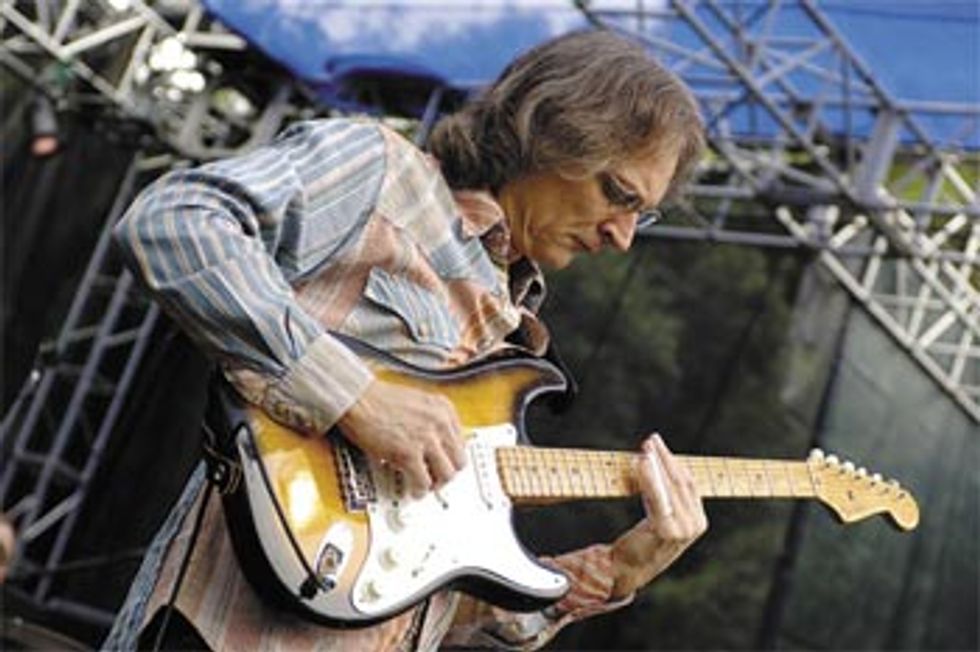 | |
|
It really is. You color that with various gadgets, gear and that sort of thing, but it really starts with that. You really should be able to hold your own. If you really want to test your metal, sort of speak, don’t use any effects. Plug straight into an amp and just try playing a gig like that. When you’ve got your own voice, it’s going to come through no matter what.
How’s the action set up on your guitars?
I use what would be considered a medium action for acoustic guitar. I use gauge .13 thru .56, pretty heavy for a rocker, but it’s really not for a grasser. Bluegrass players like high action and the heavier strings are okay for them. What it does for me, when using open tuning – chordal tuning – is that gauge really opens up the sound of the guitar. You get a lot more harmonics and overtones, which enables you to get a more complex sound.
What tunings do you get into?
I have a lot of tunings I use, but at a gig it’s anywhere from five to eight. It depends upon the set list and what we’re doing that night.
Are there any particular tunings you like more than others?
I’d put them more in a group. I like the slack key tunings – the Spanish tunings, like G and D. I love the elasticity of the sound and the feel it gives you. The notes elongate just a little more. They really sink into each note. I love that, like in Elmore James’ “Dust My Broom.” D is just the blues key I think. For some of the more complicated things, the higher tunings like E and A, for example, the fingering is all the same from E to D. The fingering positions are the same for A and G. However, it’s a higher sound because the harmonics are different, there’s more tension and it just gives it more of an edge for tunes that rock a bit more. And F minor, or various tunings in minor keys, I love those. Some of my favorite tunings are minor, and I’ve always felt that the minor blues is about the most beautiful sound there is.
You played at Clapton’s Crossroads festival last summer.
Yes, we did. We were the first ones to come out the chute, man – 12 o’clock noon. We had been up most of the night before, playing a late night gig and we were ready to rock at noon. [laughs] It was just a real huge moment for me when Eric Clapton came out and sat in with us – that was about the greatest affirmation for me. He was one of my original guitar heroes. That’s why I wanted him on the new album, too. It was really exciting and we’d been playing a lot so the band was on. As a group we felt really good. It was crazy because it’s always by the seat of your pants at any festival oriented gig. The crew and all were fantastic, but it’s just great to play live and be around all those amazing musicians.
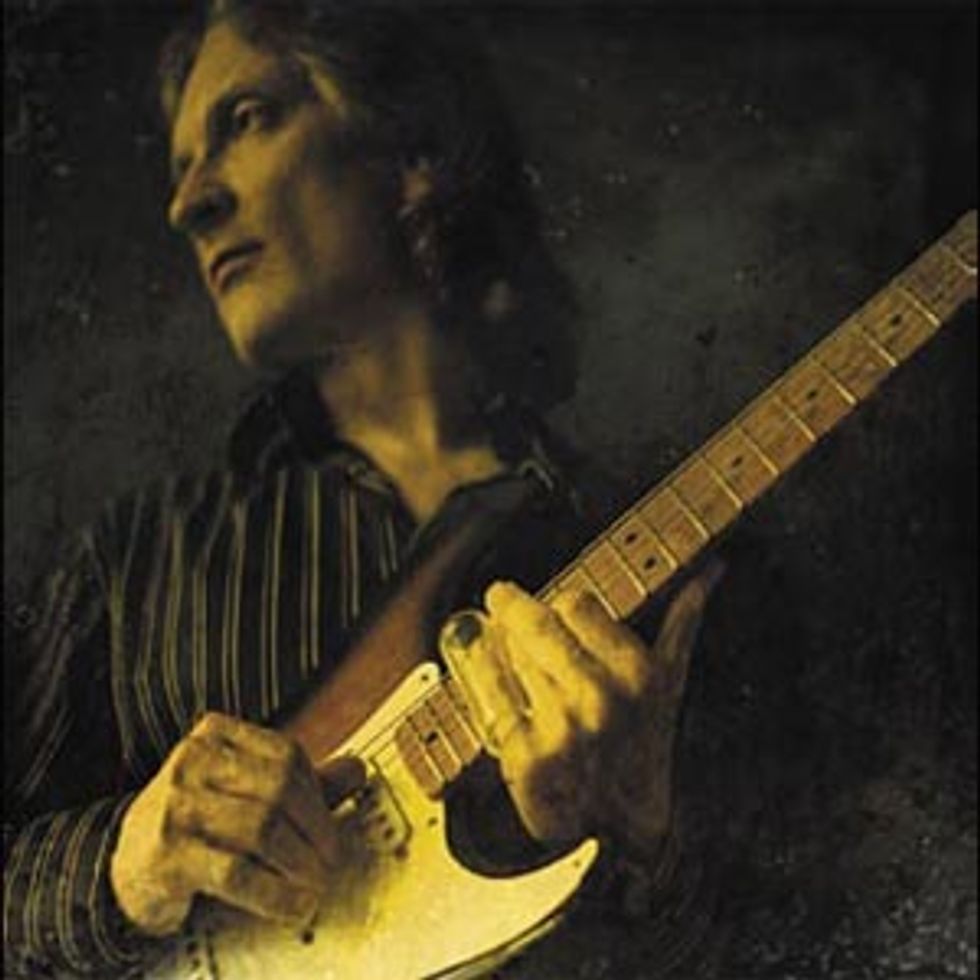 | |
|
Actually, I worked on his album, A Sense of Place, in 1990. On that project I met my future co-producer, Bobby Field – R. S. Field. And that was another one. I was a huge John Mayall, Eric Clapton and Jeff Beck fan. Way back I’d listen to their music, so I was really honored to get to do that. He was great to work with and the fact that he did a couple of my songs was a huge honor as well.
He got a lot of wear out of “Congo Square.”
Yeah, that’s the one most covered by people.
On your new one, From the Reach, were the tracks all done correspondently?
Not all, but just about all of them. The way I put it to everyone was that I’d do whatever they wanted. Of course, they were invited to come to South Louisiana or I would go to them with the tracks – however they wanted to do it; at home and send it back to me. In most cases, that’s what they did and I had anticipated that. They had all been on heavy touring schedules and were finally home. That way they got to go to their studio with their engineer. So my job, as producer, was to use the Pro Tools technology and capture the moment emotionally. The beauty of this format was that we’d mix as we’d go.
I was able to send each artist the exact mix we were working with. I think that really helped. The twist on this project that was different from other collaborations or guest albums is that I wrote the songs for each of the guests to play on. I hoped to open the door enough because of my intense familiarity with their styles. I’m so into their playing and that helped me as a songwriter to gear towards that. But at the same time, I hoped to keep my own foot in the home soil. And it was as much a tribute to them for me – that’s how I felt about it. That excited me as a songwriter. I was told I was in a lot of trouble, labels getting in the way. They said they wanted to do it and then the red tape; blah blah blah. But it went without a hitch. Everyone was so great about wanting to do this and as their performances came back, it was just so obvious. I was totally blown away by all the performances.
I like the first Clapton contribution, “When I Still Had You.” And as you had mentioned, it’s a lot like the current Clapton style. It’s amazing the way in which the two of you go back and forth. There’s quite a lot going on in there. The second one, the bluesy thing, is good too.
Yeah! I was thinking I’d go through it and maybe use one solo. But then I thought, “Man, I ain’t gonna deny the world any Eric Clapton solos,” so I kept it all on there. [laughs] I thought it would be cool to take a song that represented his pop era, in a way, but it would have a hook and then go from that into a kind of guitar jam. I tried to be adventurous with it.
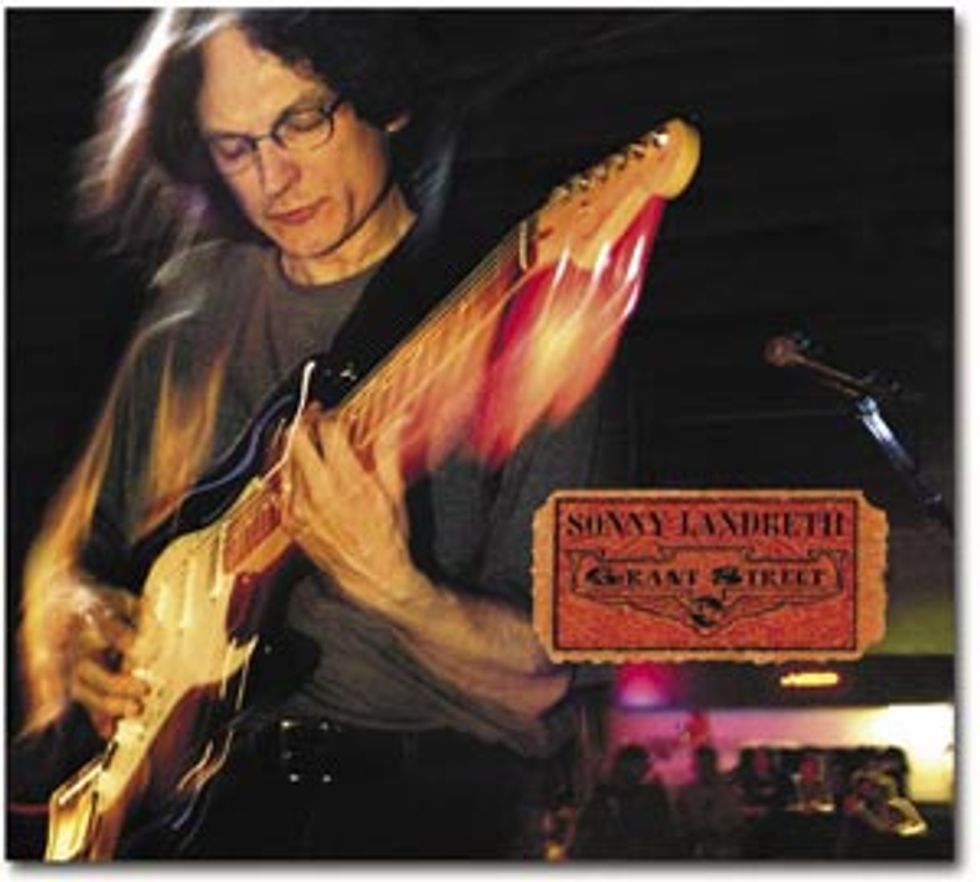 |
After sending the track, his was the first one to come back, in less than a month. I just love his playing – he’s just incredible. We’ve gotten to be friends over the years and we’re going to do some shows together. The great thing this did for me, I mean, it was so much fun. It pushed me because they all played so great. That’s what I like. And it’s good to get out of your comfort zone because you’ve got to get shook up, rattled and rolled. Reach down and bring up the magic. That’s what I always hope for.
The Vince Gill songs are excellent, too. He’s another great guitarist. Rockers don’t always realize the greatness of many of the present country pickers. When he took to the stage at the first Crossroads festival, he kind of blew everyone away.
Yeah, Knopfler and I were talking about that years ago. That guy [Gill] can play anything – any instrument he picks up. He’s an amazing musician and I wanted to hit on that on this album, but we ran out of time. I worked with both him and Dr. John in the studio for this album, but I think that’ll be my next project – guests on all instrumentals. We had an instrumental and he did a real fast chicken pickin’ kind of thing, complex chord changes and stuff, but we just ran out of time. I’ll look forward to getting into that with him. Vince is amazing.
What guitars were you using on From the Reach?
For this album, if you listen to it, I’m on the left and they’re on the right in the mix – for the most part. Another thing I wanted to stick with was to make it more thematic by using the Strats and my Dumble Overdrive Special. That was my main rig. I also used a Demeter on a couple of things – the Vince Gill track. I used the ‘69 Les Paul on the track with Robben, “Way Past Long,” to offset his humbucker. I went for more of a woman tone on the left and he’s got more edge on the right. I used some pedals on some things. I used the Keeley Compressor on a couple of things, the Demeter Compulator on “Uberesso.” I switched between a Demeter head and Dumble head on that song. I used a Zen Drive on “Uberesso.” For the most part, those are Vintage 30 speakers, an old Bandmaster cab and a double cab that Alexander built for me back in ‘95 on my amp. I also used this cool little combo, a little class A called the Goodsell. It’s brilliant. That’s what you hear in the riff on “Milky Way Home” in the verse. It’s real chimey and open-ended. I used various other Fenders for colors and such, but that’s typically what I used with mostly Lindy Fralin pickups.
Man, I’ve got to tell you. I don’t know if you’ve heard about this silent singlecoil backplate system that Lindy Fralin is using, from Suhr [the BPSSC System]. You’ve got to check this out! It’s the latest and greatest thing that has come along in a long time. The way it works it doesn’t alter your tone at all. It works with the two trempots that tap off of the leads for your ground. It’s a big, flat pickup that’s part of the backplate. It’s a larger plate and that’s part of the secret I think. It takes the hum way down to where it’s manageable. They say 85 percent; I don’t know, but it’s a huge difference. In a really noisy environment, you can open up and tweak those trempots back to find the sweet spot, no matter what kind of single-coils you’ve got. I really like Steve’s DiMarzio bridge pickups, the Virtual Vintage are good and I’ve used the DP181s for years – the Fast Track twin blade in the bridge. So I went back and forth with the single-coil, Lindy Fralin’s and then with some of Steve’s pickups.
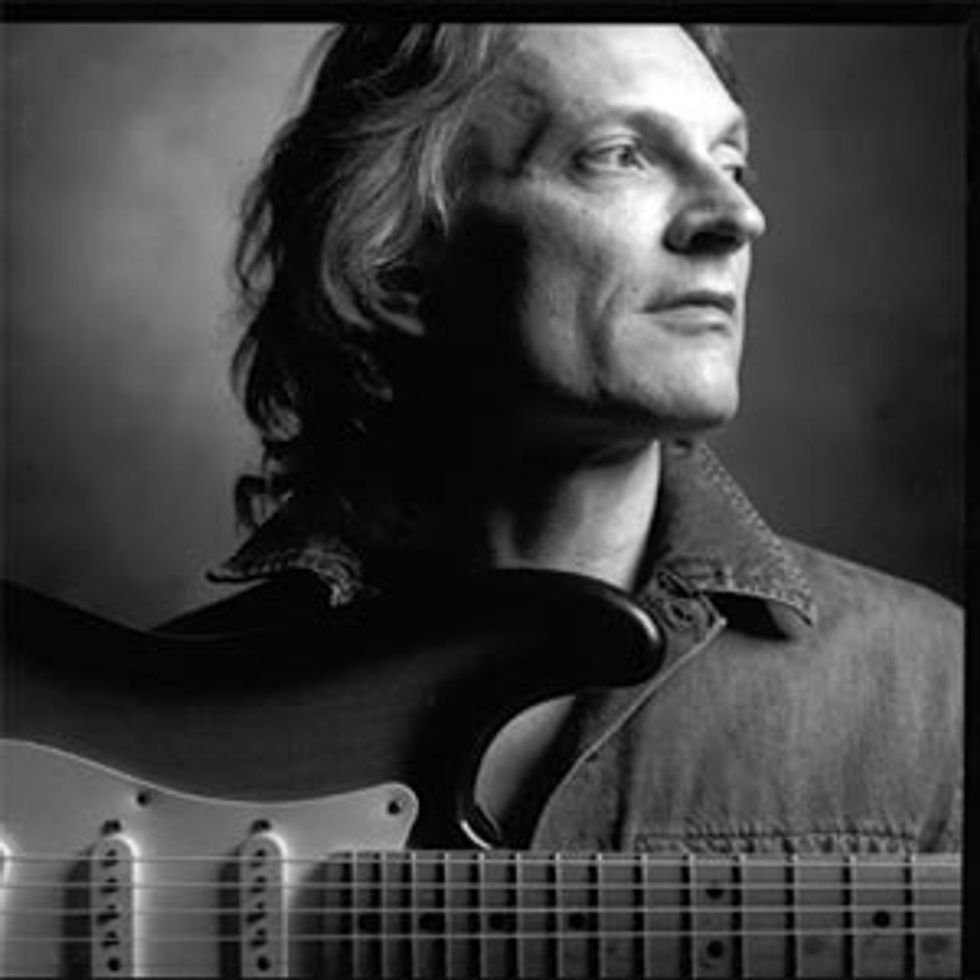 | |
|
There’s a bunch of things, but the one thing I’m going to miss the most is getting text messages from Eric Clapton. I’d be in a hamburger joint here at home, just getting ready to go to the studio and the thing starts vibrating. I look down at it and it says, “I just finished working on the track, and I’m feeling good about it.”
As it would progress, he’d give me these updates. I’d text him back asking him to sing harmony on “When I Still Had You.” He’d text me back, saying, “Well, I’ll try.” The next morning, he text messages me, saying, “Well, I did the harmony vocal. I think it sounds like crap, but you’re welcome to use it.” [laughs] I then called him up, knowing he was in the studio and he answered the phone laughing. I said, “Man, there’s no way that’s going to sound like crap.” He said, “Well, I just couldn’t phrase it the way you did” – being really critical of himself. But it sounded awesome, of course.
| Sonny’s Gearbox On the road and in the studio:
| |||||||||
Sonny Landreth
sonnylandreth.com


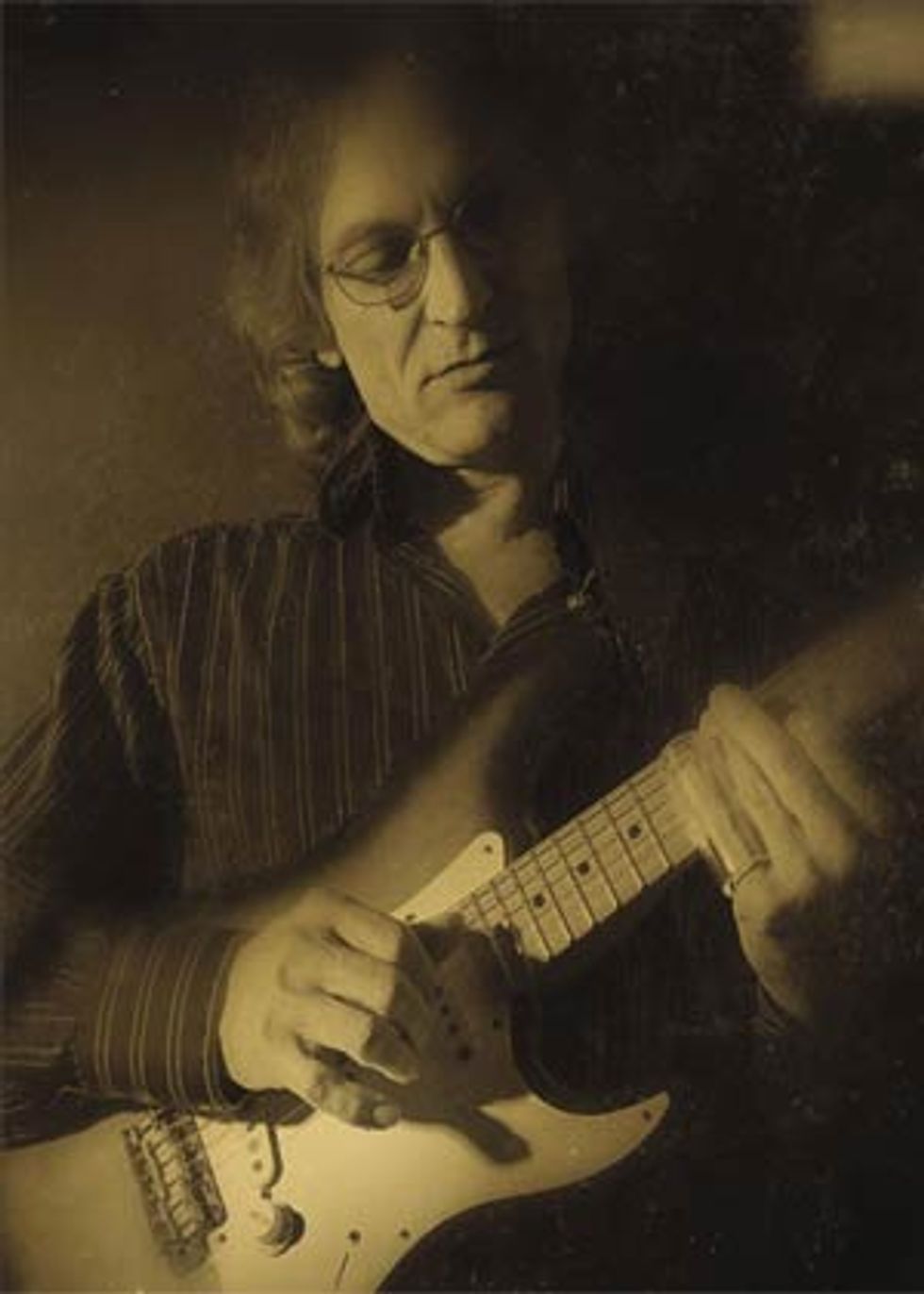








![Rig Rundown: Russian Circles’ Mike Sullivan [2025]](https://www.premierguitar.com/media-library/youtube.jpg?id=62303631&width=1245&height=700&quality=70&coordinates=0%2C0%2C0%2C0)












![Rig Rundown: AFI [2025]](https://www.premierguitar.com/media-library/youtube.jpg?id=62064741&width=1245&height=700&quality=70&coordinates=0%2C0%2C0%2C0)




















 Zach loves his Sovtek Mig 60 head, which he plays through a cab he built himself at a pipe-organ shop in Denver. Every glue joint is lined with thin leather for maximum air tightness, and it’s stocked with Celestion G12M Greenback speakers.
Zach loves his Sovtek Mig 60 head, which he plays through a cab he built himself at a pipe-organ shop in Denver. Every glue joint is lined with thin leather for maximum air tightness, and it’s stocked with Celestion G12M Greenback speakers.











